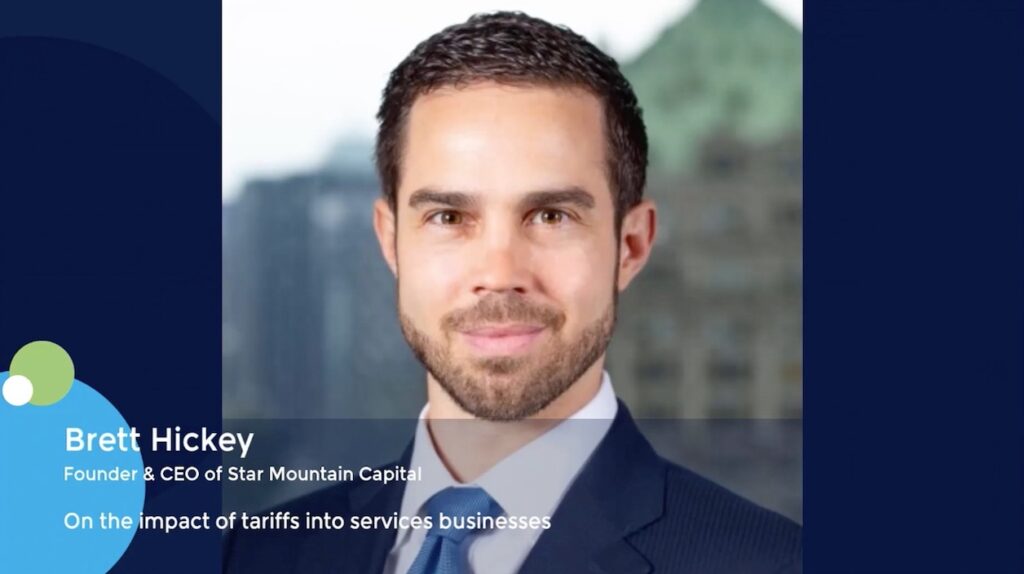Portfolio: DCP Capital pursues diversification agenda with China’s Am-Sino Healthcare
- Investment made against a backdrop of rising macro challenges for hospitals
- DCP prioritised governance upgrades, expansion of obstetrics-oriented offering
- Customer satisfaction, digitalisation, M&A are focal points in the next phase
When George Q. Kuo, founder of Am-Sino Healthcare, completed a 24-month prison sentence in January 2020 for selling unapproved medication, he faced two immediate challenges. First, a group of existing investors, some of which had supported Am-Sino for six years, wanted to exit. Second, he needed new sources of capital to drive future development of the business.
DCP Capital, which had reached out to Kuo as early as 2019, provided a solution. The resulting buyout – secured at a sub-USD 300m valuation – set the stage for 32% revenue growth, a 10-percentage-point increase in EBITDA margins, and Am-Sino consolidating its already market-leading position for obstetrics in Shanghai’s high-end private hospital segment.
Wayne Wang, a managing director at DCP and chairman and CEO of AM-Sino, explained that asset quality, brand strength, and a primary physician care model seen as difficult to replicate in other hospitals shone through.
“Additionally, we identified an unrealised upside stemming from the potential evolution of the business model. Female patients from the obstetrics department naturally return for gynaecology and mental health support, while babies born in our hospital require paediatric services,” he said, while declining to comment on matters such as deal size.
“This creates two value chains: one for the mother and one for the child. Ultimately, our goal is to establish a family medicine business that serves the entire family.”
DCP is not the first private equity investor to make acquisitions in China’s hospital space. A first wave of activity was triggered by a relaxation of regulatory restrictions in 2013 that allowed 100% foreign ownership in certain cities. Investors believed that introducing international best practices could draw the country’s rising middle class away from public hospitals to the private sector.
The likes of Hony Capital, KKR, and Morgan Stanley Private Equity Asia embarked on roll-up strategies with varying degrees of success. Meanwhile, Eight Roads and Trustbridge Partners opted for the greenfield route, building hospitals from scratch and reconciling themselves to extended holds.
Kuo established Am-Sino – originally known as American-Sino Medical Group – in 2003 to promote a US-style private healthcare model in China. The first facility was Shangahi Huashan Hospital, which spawned medical centres in Beijing and Hangzhou. The flagship American-Sino Women’s and Children’s Hospital opened in 2015. Ten investors bankrolled the expansion, including IDG Capital, YF Capital, GTJA Investment, and TCL Capital.
Changing dynamics
By the time of DCP’s investment, the competitive dynamics of China’s private hospital space had shifted. In 2020, there were 23,524 facilities nationwide, more than double the 2013 total. Well-funded groups like United Family Healthcare (UFH) and Shanghai Jiahui International Hospital dominated Shanghai’s obstetrics market.
UFH, which has three hospitals and clinics in Shanghai, is an interesting case study. TPG Capital and Fosun Pharma backed a take-private of UFH’s parent in 2014 – as the first wave of deal flow was cresting – and then exited it to a special purpose acquisition company (SPAC) in 2019. Two years on, just as DCP was moving for Am-Sino, the SPAC sponsor privatised UFH once again.
This was happening against a backdrop of broader challenges, notably China’s declining birth rate and an expected slowdown in healthcare expenditure. Frost & Sullivan projects that spending per capita will post compound annual growth of 7.7% in 2023-2027, down from 8.9% in 2018-2023.
DCP was not deterred. Owen Zeng, a director at the PE firm and COO of Am-Sino, noted that, despite the demographic issues, women in China are focusing more on healthcare quality. Am-Sino’s brand and primary physician care model – paediatricians may spend 15-20 minutes on individual consultations, obstetricians are available around the clock for emergencies – are key selling points.
“In an industry experiencing high single-digit growth, additional growth can be realised through effective portfolio management that focuses on efficiency improvements. At the end of the day, we could achieve double-digit compound annual growth in both revenue and profit,” Zeng said.
In addition to American-Sino Women’s and Children’s Hospital, Am-Sino has three outpatient clinics and a specialist postpartum care centre in Shanghai. The group employs 400 medical personnel, including 169 doctors – with over two-thirds working full-time – and has treated over 1m patients to date. The flagship facility, which specialises in obstetrics and paediatrics, has 120 beds.
But what DCP found in 2021 was an organisation in disarray. Quo’s enforced two-year absence was for sourcing a certain kind of pneumonia vaccine – unavailable in China at the time – from Singapore through unofficial channels. Unable to take a hands-on approach to management, a leadership vacuum formed at Am-Sino.
This accentuated flaws in an already weak governance structure. In a situation not atypical of family-owned Chinese companies where the founder presides over operations in an autocratic manner, reporting lines to the CEO comprised managers from over 20 departments.
“When we first took over the business, there were many management silos. This led to an excessive focus on relationships with leadership, which could be psychologically exhausting,” Zeng explained. “Reframing the organisational structure is the first step in transitioning from a paternalistic system to a professional management approach.”
To improve governance, DCP restructured the board, incorporating members from its investment team, post-investment operations team, and company management. To address weaknesses in the management team, the private equity firm replaced most of the leadership.
In practical terms, the company transitioned to a matrix management model with dedicated management centres. The number of reporting lines to the CEO narrowed to fewer than eight, which is considered in line with international best practices.
End-to-end services
COVID-19 presented clear obstacles. During the Shanghai lockdowns, DCP representatives resided in the hospital for over three months alongside the doctors and management. Consequently, not only did Am-Sino’s obstetrics and paediatrics departments remain open, boosting its customer-centric image, but operational improvement initiatives stayed on track.
Wang and Zeng arrived from DCP in the second quarter of 2022. Another key appointment came nine months later.
Tony Duan brought extensive clinical experience and a reputation for raising public health awareness within obstetrics and gynaecology, having previously served as director of Shanghai First Maternity and Infant Hospital, a top public hospital. There, in the space of four years, he built China’s leading establishment by number of deliveries.
Duan was installed as chief medical officer with a brief to strengthen Am-Sino’s professional capabilities. In addition to doing this, he leveraged his substantial social media presence – 2m followers on Xiaohongshu, 5m followers on Douyin – to continue the health awareness drive.
“His joining elevated both the quality of medical services and the management of the clinical team to the next level. As investors, we are strong at commercial operations, we are comfortable with general management. However, there is a knowledge gap in medical services and quality control, which often leads to management issues arising. Professor Duan filled up the gap,” Wang said.
Duan and DCP shared a vision of “life-long comprehensive health management,” which involved expanding Am-Sino from a single speciality player in obstetrics to a broader medical services provider across gynaecology, obstetrics, and paediatrics. This evolution – ultimately moving towards an entire family solution – helped diversify a previously highly concentrated revenue base.
“If you only focus on obstetrics, you will always have to acquire new customers,” Duan told domestic media. Rather, he wanted to build on the trust created through high-quality obstetrics by introducing complementary services, from family planning to postpartum care.
Emphasizing this full life-cycle model, Am-Sino built a sales funnel to ensure that customers at each stage of the cycle are retained. Of mothers who give birth at its hospital, around 70% return for vaccination services. Moreover, 70% of that 70% use Am-Sino for follow-up children’s medical care.
While the company has increased its market share for premium obstetrics in Shanghai’s premium private hospital segment from 34% to 44%, the obstetrics contribution to overall revenue fell from 39% to 32% between 2022 and 2023. This demonstrates the successful implementation of the life-long comprehensive health management model.
For example, before Duan’s arrival, postpartum care, rehabilitation, and aesthetic services weren’t provided on a systematic basis. He categorised them under fourth-trimester care.
“The fourth trimester is a relatively new concept in China and there is a lack of awareness compared to the US and European markets. Demand for postpartum rehabilitation and restoring one’s beauty to pre-birth levels is significant and largely unmet by public hospitals,” said Zeng. “When we introduced these services, they were warmly welcomed by customers.”
Am-Sino also focused on improving product design, promotion and marketing, including the hosting of monthly healthcare awareness workshops. Revenue for the fourth-trimester segment is now rising 50% year-on-year and the segment accounts for up to one-quarter of the company’s overall revenue.
The next level
Having established a broader service offering, Am-Sino is looking to accelerate growth in each area. Doctor recruitment is a major challenge for the private sector, as other private equity investors have discovered. In 2021, there were 25 physicians per 10,000 people in China compared to 36 in the US. Moreover, they are often reluctant to leave the public hospital system.
Am-Sino has managed to attract talent – Duan is a high-profile example – from the public and private sectors. Part of the pitch is allowing them to accumulate extensive clinical expertise and acquire a deep understanding of hospital operations. Most full-time physicians work in obstetrics, having been drawn by Am-Sino’s strong reputation in this field. Part-timers tend to specialise in other areas.
Even when talent is available, bringing together professionals from different backgrounds and turning them into a cohesive unit is not straightforward. “Building a customer-centric, collaborative, and merit-based corporate culture within the company is key,” Zeng said.
Am-Sino is also mindful of the need to ensure a positive user experience as its service offering expands. To this end, a department was established to focus on customer satisfaction, which includes tracking net promoter scores (NPS). Steps are being taken to embed digital infrastructure into these efforts, with new specialist hires.
Other DCP portfolio companies are playing a role as well. For example, Datong Insurance, China’s largest independent insurance brokerage, is working with Am-Sino on the development of a dedicated pregnancy and maternity insurance product.
The private equity firm remains open-minded as to its exit route. Wang noted that the immediate priority is driving financial performance by improving service quality and retaining customers across the care lifecycle.
However, there remains the prospect of inorganic as well as organic growth. Not all industry participants are equipped to address the macro challenges facing hospitals, and underperformance has prompted some shareholders to sell out. Am-Sino acquired Lejing Medical Center in 2022, and another three or four bolt-on deals are under review.
“As long as there are strong synergies for Am-Sino – such as enhancing our profits and increasing returns for our shareholders – we are willing to pursue further M&A,” Wang said.














